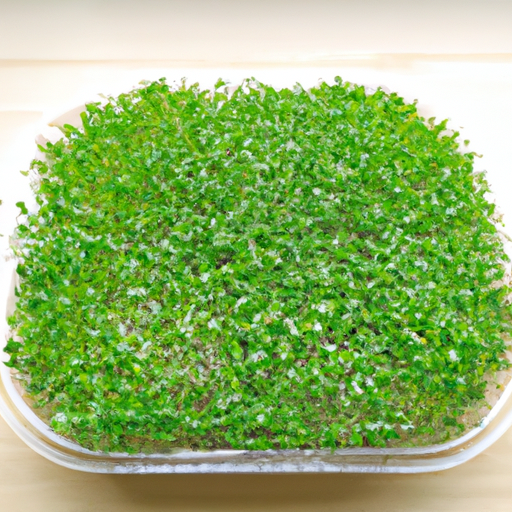Discover Microgreens: Nutritious Superfoods from Your Own Container Garden
In recent years, microgreens have gained popularity not only among health-conscious individuals but also among food enthusiasts. These tiny greens are packed with an incredible amount of nutrients and flavors, making them a perfect addition to any dish. The best part is that you can easily grow them in your own container garden, ensuring a fresh supply right at your fingertips. In this article, we will explore the world of microgreens, their benefits, and how you can start growing them in your own home.
What are Microgreens?
Microgreens are young vegetable greens that are harvested when they are just one to three inches tall. They are younger than baby greens but older than sprouts. Typically, microgreens come from various vegetables and herbs such as kale, beetroot, broccoli, radish, basil, cilantro, and many others. These miniature plants are known for their vibrant colors and intense flavors that can range from spicy to sweet.
The Benefits of Microgreens
Despite their small size, microgreens pack a powerful nutritional punch. Research has shown that they contain up to 40 times more vitamins and minerals than their fully grown counterparts. They are particularly rich in vitamin C, vitamin E, beta-carotene, and certain minerals like potassium and iron. Additionally, microgreens have high levels of antioxidants which help combat harmful free radicals in the body.
One of the main advantages of growing microgreens at home is the control you have over their cultivation process. You know exactly what goes into their growth – no pesticides or other harmful chemicals – ensuring that you have access to a continuous supply of organic superfoods throughout the year.
Growing Microgreens at Home
Starting your own microgreen garden is easy and requires very minimal space. Here’s a step-by-step guide to get you started:
1. Choose Your Seeds: Opt for seeds specifically labeled for microgreen production as they tend to germinate quickly and produce tender shoots. Experiment with different varieties to discover your favorite flavors.
2. Prepare Your Containers: You can use various types of containers like trays, shallow pots, or even old egg cartons for growing microgreens. Ensure that they have drainage holes at the bottom to prevent waterlogging.
3. Fill with Growing Medium: Microgreens can be grown in soil or hydroponically. If using soil, fill your containers with a good-quality potting mix and level the surface.
4. Sow Your Seeds: Scatter the seeds evenly over the soil surface, making sure not to overcrowd them. Lightly press them into the soil for better contact.
5. Watering and Sunlight: Water your microgreens gently using a spray bottle or a watering can with a fine nozzle. Place them in a well-lit area like a windowsill where they can receive bright indirect sunlight.
6. Patience and Care: Microgreens usually take around 1-2 weeks to be ready for harvest. During this time, make sure to keep the growing medium moist but not soaked and protect them from extreme temperature fluctuations.
7. Harvesting: Once your microgreens have reached the desired height of 1-3 inches, it’s time to harvest them. Simply snip off the greens just above the soil line using clean scissors or sharp kitchen shears.
8. Enjoy!: Microgreens can be used as a flavorful topping for salads, sandwiches, soups, or even as an ingredient in smoothies and stir-fries. Remember to wash them thoroughly before consuming.
The possibilities are endless when it comes to incorporating microgreens into your meals – their vibrant colors and intense flavors will undoubtedly elevate any dish you create!
In conclusion, microgreens are an incredible addition to any diet due to their exceptional nutritional value and fresh taste. By growing these miniature plants in your own container garden at home, you can ensure a continuous supply of these superfoods all year round. So why not start your microgreen journey today and discover the joy of harvesting and enjoying your own nutritious greens straight from the garden?













